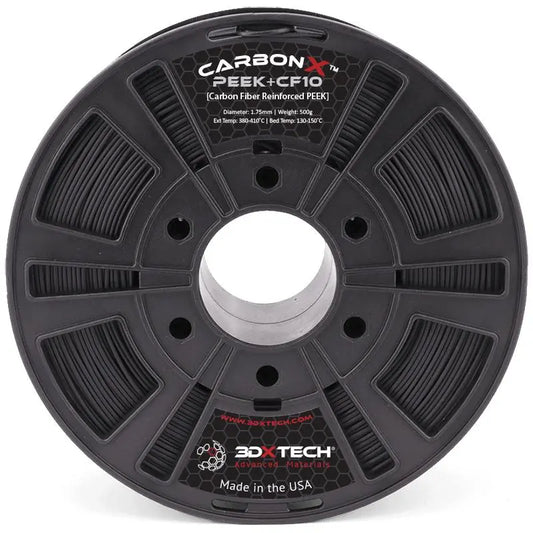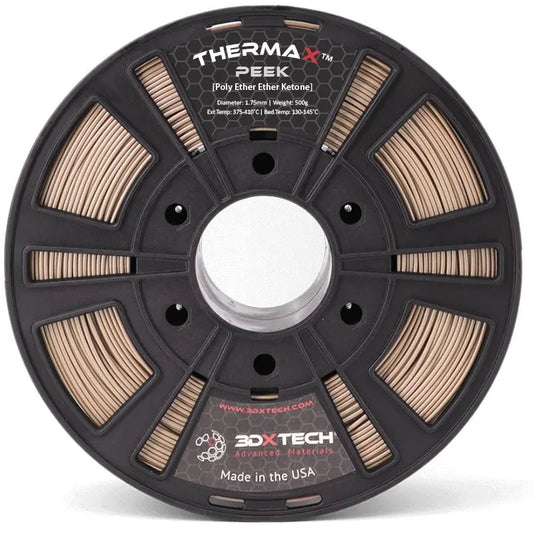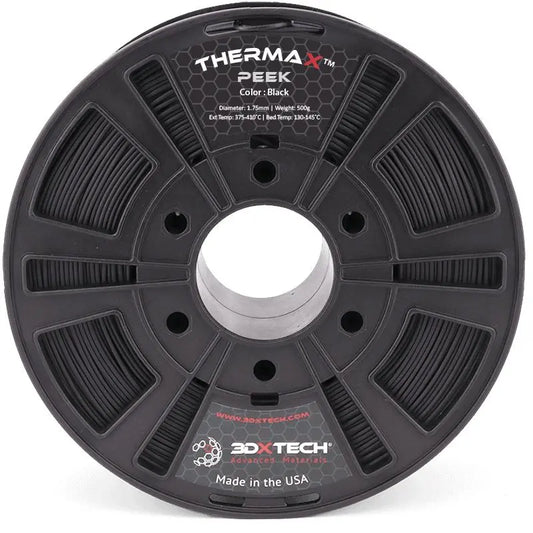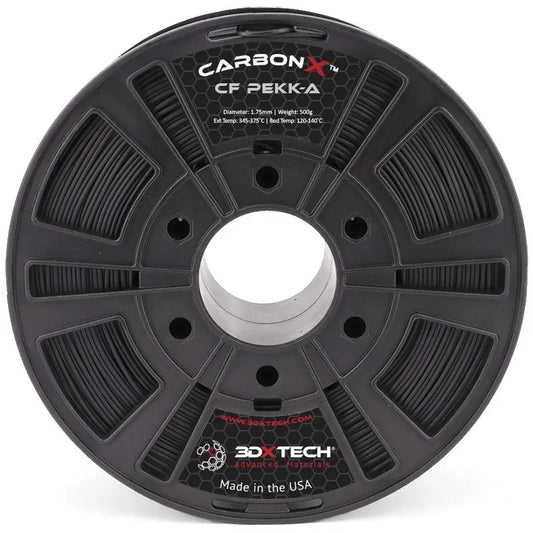3D Printing Canada is bringing you a variety of PEEK filaments to create complex and custom-designed 3D printing objects with high precision. PEEK is a high-performance polymer with exceptional strength and thermal stability, making it suitable for a variety of applications.
We provide options in various diameters and spool sizes that cater to your specific printing needs. With our expertly crafted selection of PEEK filaments, you can unlock the potential to produce parts that not only meet the rigorous demands of industrial applications but also possess the finesse required for intricate, high-detail projects. Explore the frontier of 3D printing technology and transform your innovative ideas into tangible, high-quality realities.
Significance of PEEK Filament in 3D printing
This semi-crystalline technopolymer is becoming famous because of its excellent mechanical capabilities, thermal characteristics, and chemical resistance. Here’s a detailed overview of its importance in the 3D industry.
Strength
PEEK filament exhibits impressive mechanical properties, including high tensile strength, stiffness, and impact resistance. Parts printed with PEEK can withstand heavy loads and maintain their structural integrity under stress, making them suitable for demanding engineering applications. Also, PEEK can withstand temperatures up to 260°C (500°F) continuously, making it ideal for applications where exposure to heat is common.
Lower Weight
3D printing thermoplastics produce lightweight structures that are crucial for several industries. The specific weight of PEEK (1.3 g/cm3) is one-sixth that of steel and one-half that of aluminum. PEEK filament has a low inherent specific gravity, making it ideal for producing lighter-weight products.
Reduction Of Waste
PEEK filament in 3D printing services also has the advantage of reducing waste. Many metals are difficult to recycle and take several years to decompose in landfills. However, thermoplastics, like PEEK materials, are more easily repurposed as they do not have a recycling expiration date. Manufacturers can remelt leftover thermoplastics many times, obtaining more use out of their products while reducing waste generation.
Applications of PEEK Filament
- Aerospace: Engine components, aircraft bearings, brackets, clips, housings, electrical insulation.
- Automotive: Gears, pistons, seals, bushings, bearings, gears, and fuel system components.
- Medical: Implants (spinal cages, joint replacements), dental devices, surgical instruments, other medical devices
- Chemical processing: Valves, pumps, piping
- Oil and Gas Industry: Connectors, valves, and pump parts for both upstream and downstream operations.
- Electrical and Electronics: Connectors, insulators, circuit boards, and protective coatings for electronic components.
- Chemical Processing: Seals, gaskets, pump parts, and piping systems.
FAQs
Is PEEK filament compatible with my 3D printer?
PEEK filament requires a 3D printer equipped with a high-temperature extruder and a heated build platform and chamber due to its high melting temperature (above 300°C). Not all 3D printers are capable of handling PEEK filament, so it's essential to check the specifications of your printer before attempting to use PEEK.
Are there any safety precautions or special handling instructions for PEEK filament?
- Ensure proper ventilation in the printing area to disperse any fumes released during printing.
- Due to the high temperatures involved, printing with PEEK filament is often done in an enclosed environment to maintain stable temperatures and prevent temperature fluctuations.
- Keep the printing area clean and free of debris to prevent contamination of the filament and ensure smooth printing.





